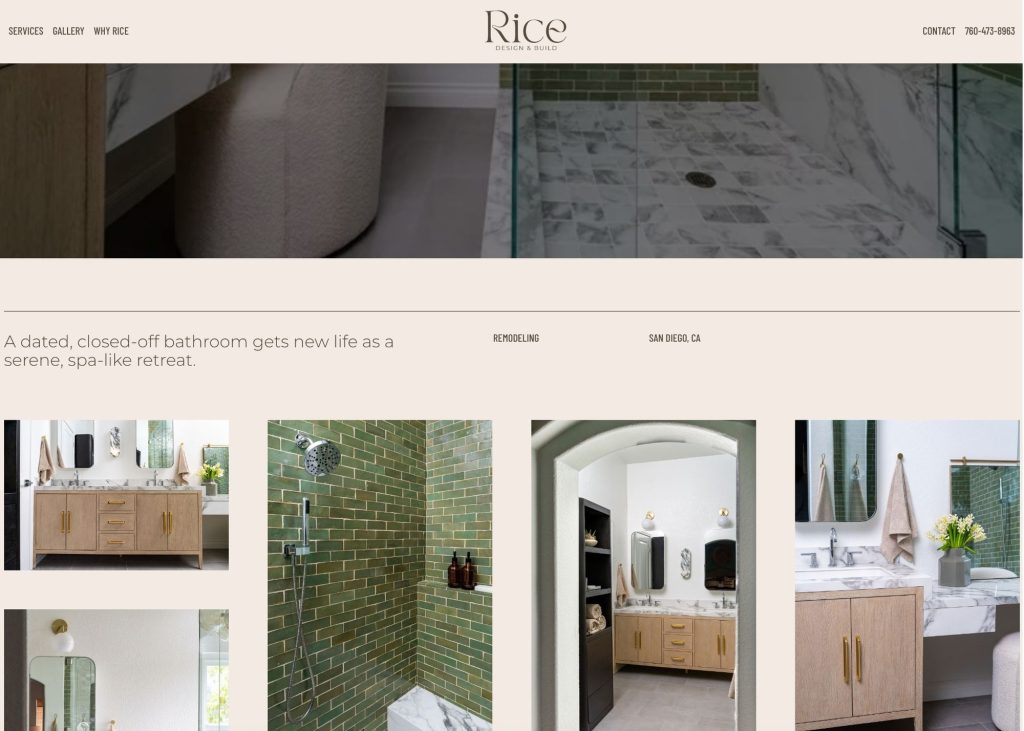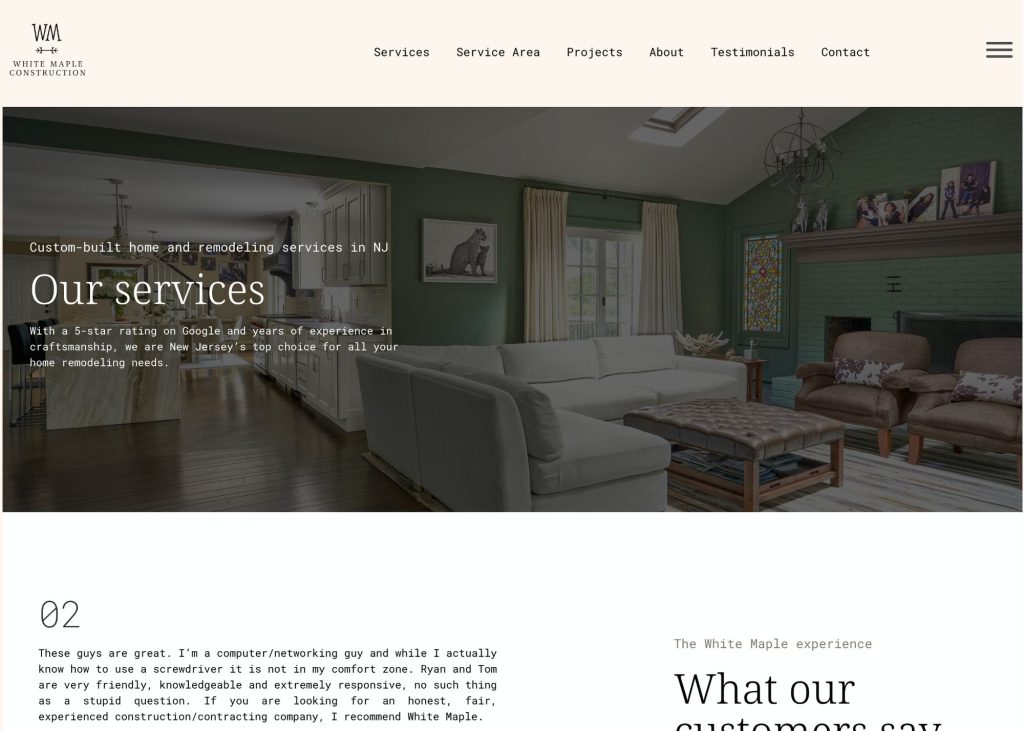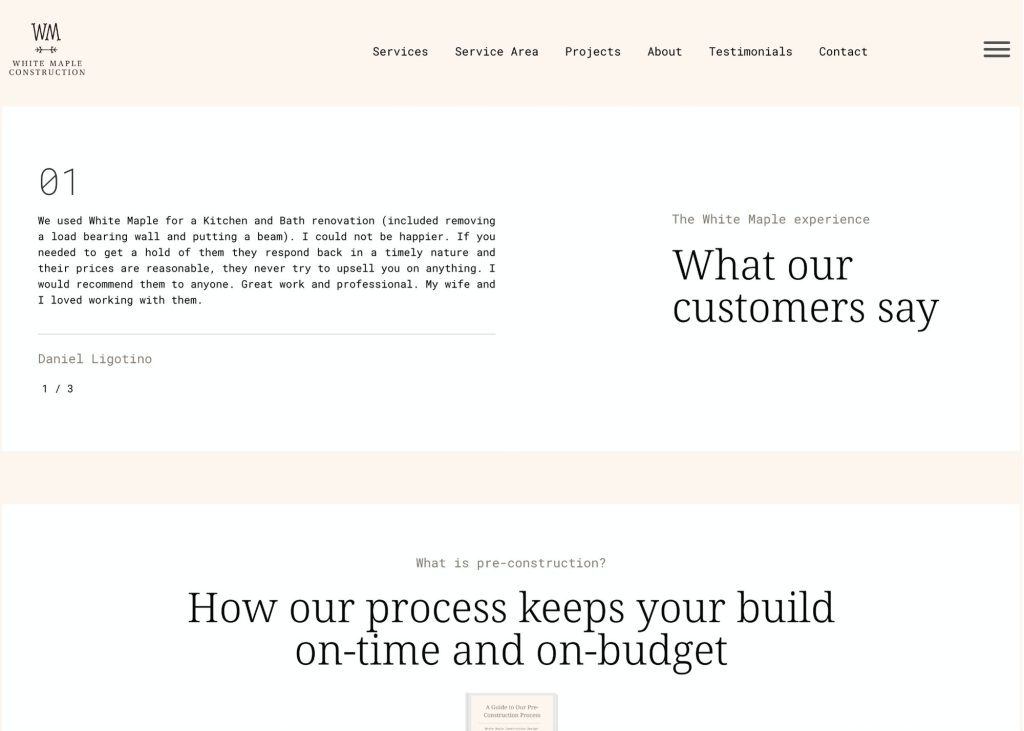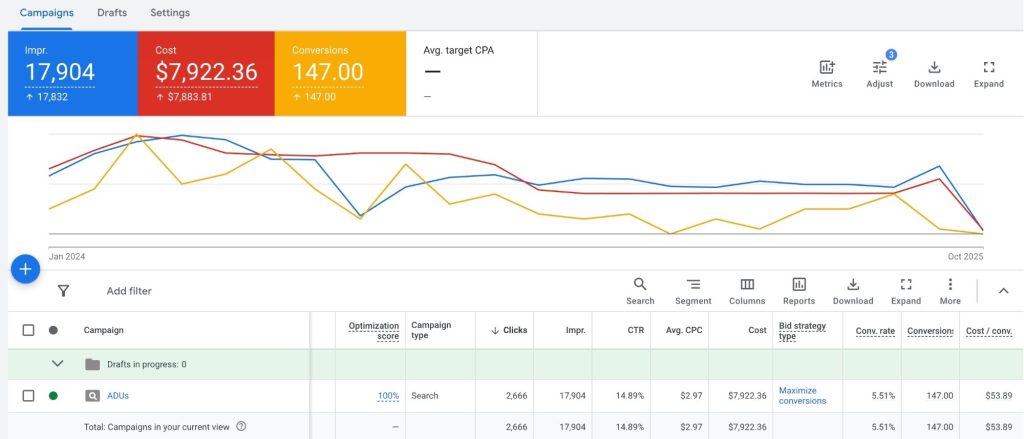At Nover Marketing, we are a full-service marketing agency that works exclusively with architecture, engineering, and construction companies. Most of our clients are in the construction industry, and over the years we have partnered with businesses ranging from mom-and-pop residential remodelers to large-scale commercial contractors. That focus has given us deep expertise in what works, what doesn’t, and how to build a marketing system that actually drives results for construction companies of all sizes.
Audience and Positioning
1. Know who your audience is. Residential construction clients often rely on referrals or Google searches, while commercial clients typically hire through relationships and RFPs. The only exception is “bridge jobs,” like small office remodels, where small business owners turn to Google because they lack industry contacts.
2. Understand what your audience values. A price-sensitive homeowner may not care about polished photography, but a luxury client absolutely will. Align your investment in marketing with the expectations of the audience you want to serve.

3. Position your brand clearly. Be intentional about how you present yourself today, but also think forward to where you want your business to go. For example, we worked with a design-build remodeling company in New Jersey that originally highlighted smaller projects like bathrooms and basements, but wanted to transition into ground-up custom home builds. We restructured their website to feature large-scale remodels, additions, and custom homes, positioning them for where they wanted to grow rather than the mix of jobs they had at the time.

4. Keep your messaging consistent. Highlight the types of projects you most want, like kitchens or additions, so the right clients are drawn to you. Secondary services can still be mentioned, but they should not compete with your primary positioning.
Starting Out: Boots on the Ground
5. Start small with boots-on-the-ground marketing. Local outreach through yard signs, flyers, and neighborhood forums still works, especially for new companies. One of our custom home-building clients in Florida, who builds multimillion-dollar homes, operated for 20 years without digital marketing. Their reputation was built on yard signs in the high-end neighborhoods they served, and most of their clients told us they chose the company because they saw their signs everywhere.
6. Leverage word of mouth. Referrals remain one of the most powerful ways to build trust and credibility. Always ask satisfied customers to recommend you to friends, family, and neighbors.
7. Use job site signage. Every project is a billboard for your business. A simple sign with your logo and contact info turns passing traffic into potential leads.
8. Document your work from the beginning. Even iPhone photos are better than nothing, and they build a portfolio you can use later. One of our remodeling clients in Central Ohio had never invested in professional photography, but they handed us a massive library of project photos. We sorted through them, cropped and color-corrected the best ones, and used just 12 projects to build out a polished portfolio on their site. Even without professional photos, their website now generates consistent leads because they had enough raw material to showcase their capabilities.
Building a Digital Foundation
9. Invest in a strong website. Your website is the foundation of all digital marketing and the place where prospects convert into leads. A cheap site without strategy will cost you more in wasted ad spend and lost opportunities.
10. Do keyword research before you build. The right site structure ensures both SEO and PPC campaigns can succeed. Without research, you risk building a site that does not align with how people actually search for your services.
11. Set up analytics and tracking. Use Google Analytics to measure traffic and Google Search Console to make sure your site is indexed. If your site is not connected, Google may not even know you exist. For example, one of our ADU builder clients added a configurator tool to their site that let visitors price out models. Because analytics was in place, we discovered the tool was cannibalizing conversions — people used the configurator, got their numbers, and left without talking to sales. The quality of leads dropped so much that the tool would have needed to increase volume by 560 percent just to break even. Without tracking, they would have assumed the new tool was a success, when in reality it was hurting the business.
Paid Advertising and Lead Generation for Construction Companies
12. Budget realistically. Plan for at least $1,000 per month in ad spend, and understand that construction sales cycles are long. Leads captured today might not close for six to nine months, so make your marketing investment before you desperately need it. Unfortunately, we had a client come to us in an “oh no” moment where they needed revenue immediately. We launched ads that performed well and delivered quality leads, but because their projects were large metal buildings with long sales cycles, they couldn’t sustain the marketing budget long enough to close deals. They knew the marketing was working, but they had waited too long to start and cashflow became the limiting factor.
13. Prioritize bottom-of-funnel ads. Focus on channels where people are already searching for your services, like Google PPC search ads. These campaigns capture active buyers rather than casual browsers. A great example is an ADU builder who originally followed franchise advice to invest in Meta ads. We convinced them to put their limited budget into SEO and PPC instead, and within their first year they closed more than $1 million in new business from those bottom-of-funnel campaigns.
14. Avoid Performance Max campaigns at small budgets. These spread money across top-of-funnel placements like display ads and rarely deliver high-quality leads for construction. We have seen countless companies waste money here because of poor agency advice.
15. Use Local Service Ads strategically. LSAs work best for trades like plumbing or electrical where you are open to a wide variety of jobs. For higher-value remodels, they can lead to mismatched leads because you have less control over targeting.
16. Know when to add Meta Ads. Facebook and Instagram ads can build awareness and generate interest, but they often deliver lower-intent leads. Use them for long-term brand building rather than expecting immediate conversions.
Content and Branding
17. Invest in professional project photography when the time is right. High-end clients expect polished visuals that match the level of work you deliver. A local photographer who shoots homes or even family portraits can be a cost-effective way to get started, while multimillion-dollar projects deserve top-tier photography and drone footage.
18. Tell project stories. A photo gallery might catch attention, but the story of how you solved challenges builds authority. These writeups also strengthen your SEO and give you content to share with prospects facing similar issues.
19. Leverage testimonials. Turn your best client feedback into case studies, videos, or social media content. Prospects are more likely to believe your past clients than your sales pitch.

Reviews and Reputation
20. Build a review system. Google reviews directly influence both rankings and trust, so start asking for them immediately. A personal request at the end of a job, paired with a QR code on a business card, will deliver far better results than an email alone.
21. Respond to reviews. Always thank people for positive feedback, and address negative reviews calmly and professionally. Prospects will judge you more on how you handle criticism than on the criticism itself.
Scaling Up
22. Understand when you have hit a plateau. Word of mouth and referrals can only carry you so far. Recognize when growth has stalled and invest in marketing before you are scrambling for leads.
23. Know when to start investing in more top-of-funnel strategies. SEO and PPC are great for capturing existing demand, but there is only so much demand to capture. Once you hit a point of diminishing returns — where spending more increases your cost per lead instead of lowering it — it is time to shift some budget into demand creation. Top-of-funnel tactics like display advertising, video ads, and PR campaigns introduce your brand to new audiences who may not be ready to buy now but will think of you first when they are.

24. Reinvest in marketing as you grow. Marketing is not a one-time project but a compounding investment. As your revenue increases, your marketing spend should scale to unlock the next level of growth.
25. Work with industry specialists. Generalist agencies often waste budgets on the wrong strategies because they do not understand construction. We recently had another marketing agency bring us one of their clients after they had outsourced ads to subcontractors who had no industry experience. That client spent money on paid advertising for a year with no results and even got hit with a housing policy violation because the subcontractor targeted ads incorrectly. This is the risk of choosing the “cheaper” or “local” option — those teams haven’t learned the industry lessons specialists already know, and it can cost you months or years of wasted budget.
Marketing for Construction Companies
If you are ready to take your construction company’s marketing to the next level, we would love to help. Nover Marketing offers a free consultation where we will review your goals, assess your current marketing, and provide clear recommendations for how to move forward. Schedule your consultation today and see how working with a team that understands construction can make all the difference.